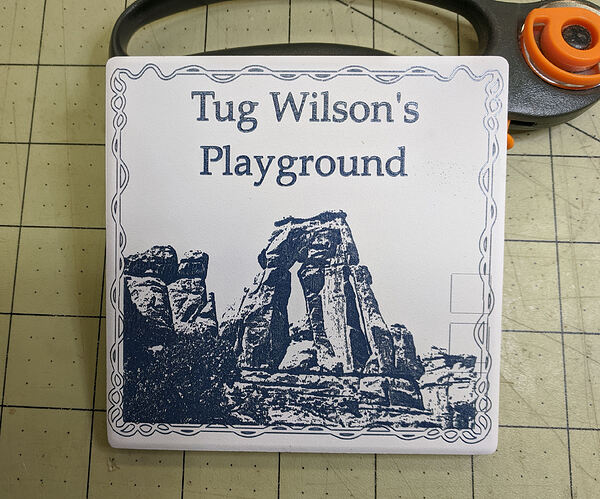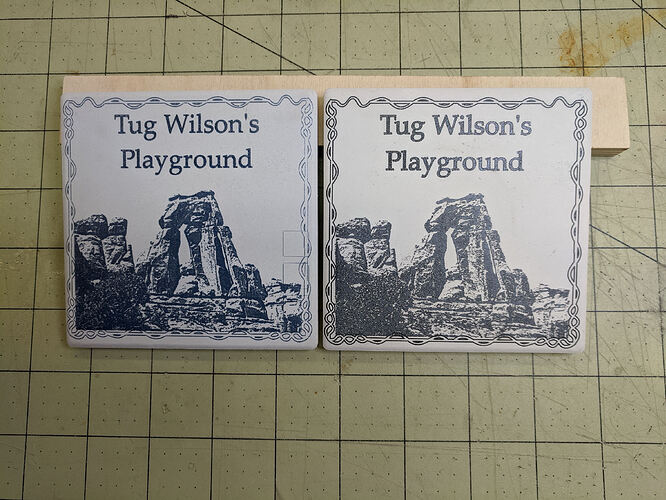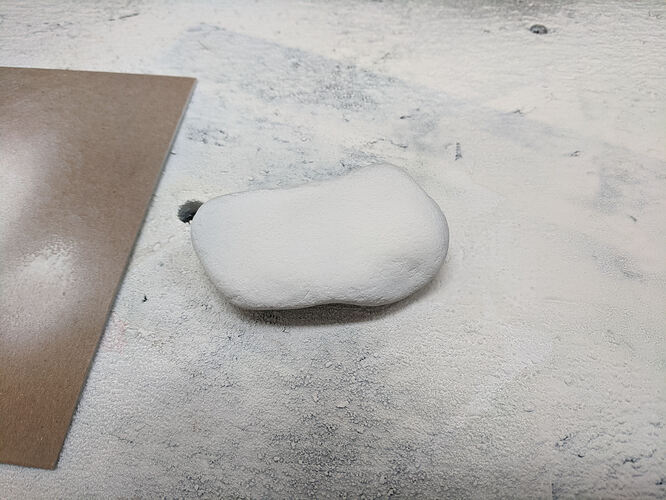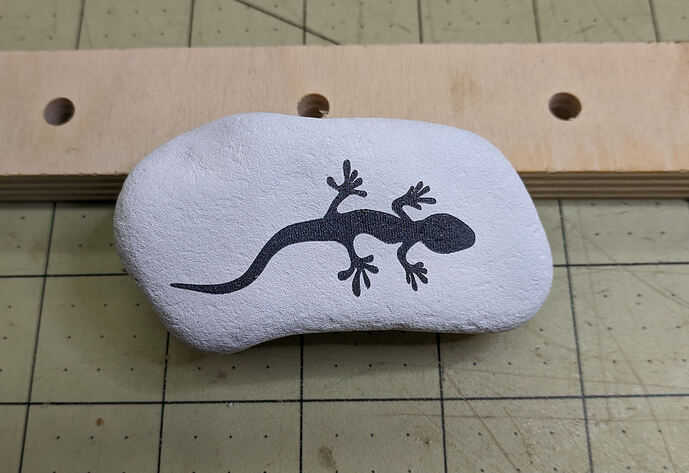Ok, I’ve done a photo tile (coaster) and did a new stone engraving with a lighter stone.
First, the tile. I’ve done this tile before with my K40:
So this time with my NEJE M2S 30W and this new method of using TiO2 powder. I had a bit of a false start and hadn’t set up my exposure levels properly (had residual Shape Property power settings) so the exposure didn’t come out perfect, but that’s ok, this was mostly a test anyway.
Not yet cleaned:
Cleaned and placed side by side with K40 version:
Interestingly, the ‘print’ seems finer on this new exposure. Part of that might be that I under exposed the vectors, but the other part might be some ‘swelling’ in the version where I had used the Rust-Oleum paint as the lines appear thicker. The color is noticeably different, but I can’t say which it ‘better’ as it completely depends on the ambient light source. Outdoors the painted version has better contrast, indoors with fluorescent lighting the ‘powder’ version seems better. In either case, I like both of them and the powder technique is SOOOOO much easier.
Deets:
Text fill/line 909mm/min, 100%, 0.1mm line interval
Vectors: Line 909mm/min, 100%
Image: 1500mm/min, 100%, 0.1mm line interval, Jarvis dither.
Now, for the latest stone exposure, Airbrushing is the ONLY way to go!
Gecko exposed, but not cleaned:
Finally, Gecko cleaned with soap, water, fine toothbrush:
Deets:
Fill+Line:
Fill: 1818mm/min, 100%, 0.1mm line interval
Line: 1000mm/min, 100%
Again, cleaning up afterward is a joy!




